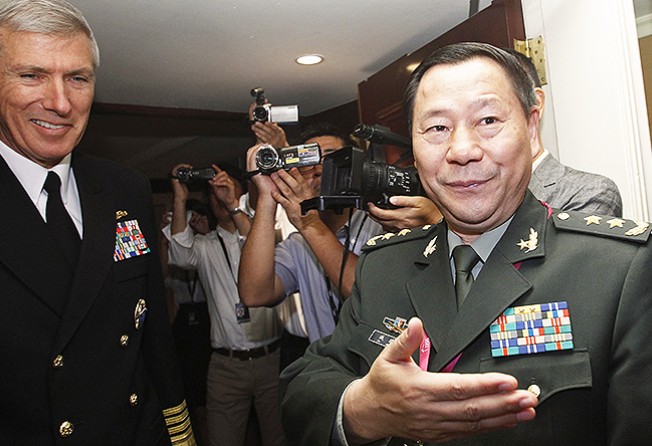US making waves over China’s sea-based nuclear deterrent
Robert Karniol says China seems unlikely to have made a big leap inits nuclear deterrent capabilities at sea, despite what the US may think

Admiral Samuel Locklear, who heads the US Pacific Command, appears to have been somewhat disingenuous with a critical piece of his recent testimony before the Senate Committee on Armed Services.
"China's advance in submarine capabilities is significant," he said. Then, turning to a new ballistic missile submarine (SSBN) and new strategic missile, the Type 094 Jin-class and the JL-2, he said that "this will give China its first credible sea-based nuclear deterrent, probably before the end of 2014".
It's the last bit, which led to alarmist headlines, that seems premature. Deterrent patrols provide a second-strike capability intended to forcefully discourage a nuclear attack. They promise a crippling response, with submarines hidden in the depths far more effective than silo-based land systems.
Just four countries currently have this capability: France, Russia, the US and Britain.
China had a sole ballistic missile submarine in service from 1981 and a suitable missile from the following year, but the former was noisy and unreliable while the latter was of questionable quality and limited range. A single platform is in any case insufficient to provide a constant presence, and this submarine never conducted deterrent patrols.
The new Jin-class boat, operational since 2010, is intended to resolve these issues, with three of a projected five submarines already thought be in service - though without their missiles. The JL-2 offers improved design and greater range, but there remain several constraints.
The technical aspects were summarised in a 2010 Pentagon report, which noted that the People's Liberation Army has "only a limited capacity to communicate with submarines at sea", and has "no experience in managing an SSBN fleet that performs strategic patrols with live nuclear warheads mated to missiles".
Chinese ballistic missile submarines would need to develop a secure communications system to receive and confirm vital launch orders, and extensively practise the process, to have a credible secondary sea-based strike capability.
Locklear's testimony suggested that China has acquired this critical technology and done the training. And though we can't know what the US Navy and its allies have observed as part of their routine monitoring of Chinese operations, both developments are questionable.
Nevertheless, a policy issue is significant. China's land-based nuclear force is kept under tight central control, with the strategic missiles and nuclear warheads kept separately. Neither is possible for a ballistic missile submarine at sea.
Some independent analysts argue that China's Central Military Commission is unlikely to authorise the deployment of nuclear warheads on ballistic missile submarines under normal circumstances, as that would represent a significant change in policy.
China will doubtless resolve the technology and training issues over time, if it has not already done so. But the policy reversal is considerably more complex. Is it all a Chinese bluff, then? After all, no technology today would allow observers to detect whether a submerged submarine is carrying nuclear warheads.
Robert Karniol has reported on Asia-Pacific security issues for nearly 30 years